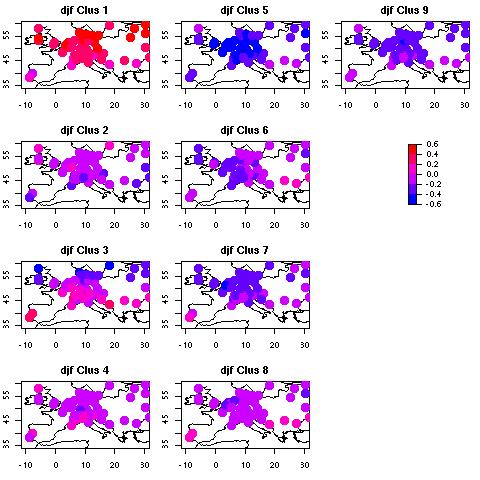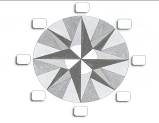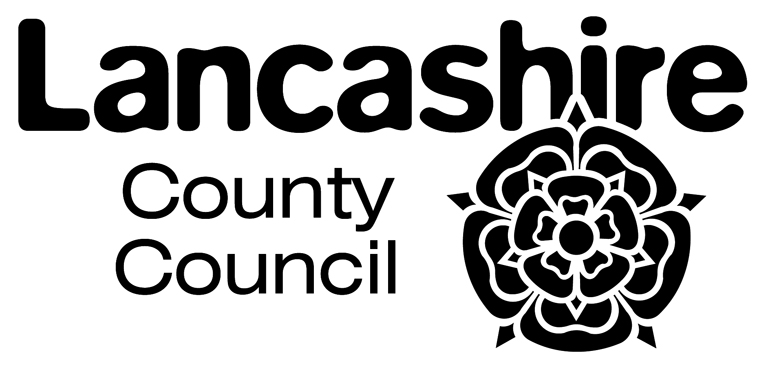WHAT FOLLOWS IS THE COURSE DESCRIPTION THIS COURSE WILL
13 LAB 3 MAMMALS OF TEXAS TAXONOMIC NOMENCLATURE FOLLOWS43 AN INTRODUCTION TO ARSHAMA CHRISTOPHER TUPLIN WHAT FOLLOWS
61704 AGGREGATES THE STANDARD SPECIFICATIONS ARE REVISED AS FOLLOWS
A FLU SHOT CLINIC IMMEDIATELY FOLLOWS THE MEAL AT
APPLYING FOR TENURE AND PROMOTION GUIDELINES WHAT FOLLOWS IS
BEOWULF AND GRENDEL THIS MOVIE FOLLOWS OUR TEXT FAIRLY
Crit Bus
What follows is the course description:
This course will examine poetry as a mode of literary production flourishing, in various forms, from ancient Greece onwards, with an emphasis on lyric poems from the romantic period to the mid-twentieth century. In order to give thematic coherence to our studies, the course will focus on ekphrasis in poetry—the verse representation of other arts, particularly painting, sculpture, and architecture, as well as more mundane objects (red wheelbarrows, snowmen, and the like).
The course should appeal both to students who have a long-standing interest in poetry and those who are intrigued by the form but to whom study of it is new. The course presumes no previous formal training in reading poetry: instruction in the technical matters of poetics, versification, and metrics will be offered early in the course, and students will gain a repertoire of readings in a variety of poetic types (dramatic verse, sonnets, the ode, etc.). The course will thus offer a good foundation for those new to the study of poetry and a valuable refresher for students who have encountered these technical matters before. We will then read philosophical and critical works theorizing ekphrasis, from the ancients to the twentieth century (e.g. Plato’s Republic and Phaedrus, Aristotle’s Poetics, W. J. T. Mitchell’s Picture Theory), so as to consider the ironies and complexities involved in the artistic representation of art, with application to a work of dramatic literature (Shakespeare’s A Winter’s Tale) and a range of short poems.
The heart of the course will be a discussion of lyric poems that take as their subject matter paintings, sculptures, and architectural structures. Our discussions will be investigatory, meaning we will often need to do detective work to uncover the relations between a poem and other artworks to which it (directly or obliquely) refers. How and why does the poet Oscar Wilde use and misuse the works of the painter Whistler to represent a prostitute? What is the effect of a poem referring to another poem about a painting that includes a depiction of a painting within its frame? Should a poet describe the Titanic or the iceberg it hit as works of art? Such sleuth work will also be central to the main research and writing project undertaken by the students in the course, each of whom will produce a critical edition of a poem, taking account of such matters as poet’s biography and a poem’s publishing history and critical reputation, and culminating in an analytic essay addressing the major ekphrastic themes of the poem.
As a UHC course, this section of “Reading Poetry” goes beyond the study of poetic representation to provide—through additional readings, in-depth discussions, and the students’ own research and writing projects—a foundational interdisciplinary understanding of the philosophical and critical matters involved in poetic production, and the reading of poetry, by considering the ways in which a range of ancient and modern critical works have tackled the matter of art representing art.
As an introductory course, this section of “Reading Poetry” will probably appeal especially to Honors students early in their university careers. Also, as a writing-intensive (W) course, it is aimed at students who are still in the earlier stages of honing their abilities as academic writers.
One of the goals of the course is not only to give students practice reading poetry—which, presumably, all sections of English Literature 0315 do—but to give them a foundational understanding of the philosophical and critical matters involved in poetic representation. This is where the particular theme of my course—ekphrasis—makes this course appropriate to and especially valuable for UHC students. Students in this course will gain an interdisciplinary understanding of the questions and issues involved in poetic production, and the reading of poetry, by considering the ways in which a range of ancient and modern critical works have tackled the matter of art representing art (in contrast, for example, to art representing nature). My intent is that students will read carefully selected critical (or, “secondary”) texts in great depth, so as then to turn to poetry (or, “primary” texts) representing the visual and plastic arts with an ability not only for fine-grained analysis of poetic form but also a sense of the intellectual problems that contextualize the production and reception of the poetry.
A detailed analysis of carefully selected primary and secondary texts is thus a chief goal of the course. The course will mainly be conducted as a discussion course in which professor and student work through the problems raised by the texts together (with, of course, the occasional necessary lecture by the professor).
BSC 2011 SPRING 2000 WHAT FOLLOWS IS A LIST
COMPLAINTS OUR COMPLAINTS PROCEDURE IS AS FOLLOWS WRITTEN COMPLAINTS
E PLEASE REFERENCE THIS ARTICLE AS FOLLOWS MITCHELL D
Tags: course description:, discussion course, course, description, follows
- MEDIDA INSTRUMENTOS Y CIFRAS PÁG 15 TEXTO INSTRUMENTOS DE
- SALARIOS GLOBALIZADOS JOSÉ GARCÍA MONTALVO PROFESOR DEL DEPARTAMENTO
- M ETING UM TILFEINGI FRÁ PF FAROE FISH MARKET
- REPÚBLICA ARGENTINA MINISTERIO DE AGRICULTURA GANADERÍA Y PESCA UNIDAD
- F FILE NO ……………………… ORM 5 QUEENSLAND CHILDRENS COURT
- MIEJSCOWOŚĆ DATA WNIOSEK O OKREŚLENIE WARUNKÓW
- DA UTILIZZARE SU CARTA INTESTATA DELLA STRUTTURA INTERESSATA SPETTLE
- TIPSKA POGODBA EDR 20102009 JAVNA AGENCIJA ZA RAZISKOVALNO DEJAVNOST
- 1PREČNI PROFIL CESTE PREČNI PROFIL CESTE MORA BITI
- UNIVERSIDAD DE LA FRONTERA CONSENTIMIENTO INFORMADO (ENTREVISTAS) ESTIMADOA SEÑORA
- НА БЛАНКЕ ФИРМЫОРГАНИЗАЦИИ (В 3 ЭКЗ) ПИСЬМОРАЗРЕШЕНИЕ НА ВВОЗВЫВОЗ
- FIXTURE CARD SUMMARY 2017 TUBBERCURRY GOLF CLUB PRIZE FOR
- FORMATOS PARA ELABORACIÓN DE NOTAS INDICADAS EN EL PROCEDIMIENTO
- RESUELVE CADA UNA DE LAS SIGUIENTES ECUACIONES 1 5X
- AFTER RECORDING RETURN TO MULTIFAMILY
- KOMPLEKSOWE USŁUGI ELEKTROENERGETYCZNE MGRINŻBOGDAN J UZAR 96330 PUSZCZA MARIAŃSKA
- MARÍA LUISA GALVÁN RAMÍREZ FELIPE GONZÁLEZ Nº 1 3º
- RASPORED SISTEMATSKIH PREGLEDA – II GRUPA (Č – I)
- STUDENT SUCCESS COMMITTEE MEETING MINUTES FACILITATORS REBEKAH BLONSHINEVALERIE WOODWARD
- R EPUBLIC INDEMNITY REPUBLIC INDEMNITY COMPANY OF AMERICA
- U IZJAVA O PRIHVAĆANJU KANDIDATURE ZA PREDSJEDNIKA UDRUŽENJA
- CURSOS DNINIFNIU USUARIO ( DATOS OBLIGATORIOS) 1 DATOS IDENTIFICATIVOS
- CLAVE DE LAS SUBFAMILIAS DE COREIDAE 1 MEMBRANA DE
- 7 TD 12420617 OPINIÓN Nº 0402018DTN SOLICITANTE MINISTERIO DE
- VOLBY DO NOVÉHO VÝBORU OS SL NÁZEV OS SL
- AIDSPAN EST UN ORGANISME INDÉPENDANT DE SURVEILLANCE DU FONDS
- DANILO VEIGA DESIGUALDADES REGIONALES EN EL ESCENARIO DE LA
- NOTE THIS FORM IS TO BE USED IN LIEU
- NAME DATE CIVIL WAR ESSAY DUE WEDNESDAY
- FYZIKÁLNÍ OLYMPIÁDA 2012 2013 KATEGORIE G KAŽDOU ÚLOHU POČÍTEJTE
 INFORME MENSUAL DE PRECIOS DE LA CARNE VACUNA
INFORME MENSUAL DE PRECIOS DE LA CARNE VACUNAССЫЛКИ НА ИСПОЛЬЗОВАНИЕ ИНФОРМАЦИИ ИЗ ИНТЕРНЕТРЕСУРСОВ HTTPRESIMMAXIHAYATNETPISAGORILEILGILIGORSELLERJPG HTTPMATEMONLINECOMWPCONTENTUPLOADS201211RATIONALANDIRRATIONALNUMBERSJPG HTTPIM4TUBRUYANDEXNETI?ID3617
 CATÁLOGO GENERAL TORNOSFRESADORAS CNC MAQUINARIA MADRID SA C VILLAFRANCA
CATÁLOGO GENERAL TORNOSFRESADORAS CNC MAQUINARIA MADRID SA C VILLAFRANCATRANSPORTATION AGREEMENT TRANSPORTATION AGREEMENT (THIS “AGREEMENT”) DATED AS OF
 EMULATE REPORT D11 SURFACE TEMPERATURE ANOMALIES AND SLP CLUSTER
EMULATE REPORT D11 SURFACE TEMPERATURE ANOMALIES AND SLP CLUSTER 2513-art_8-licitacion_publica_servicio_de_transporte_colectivo_de_personas_cartago-campus-cartago
2513-art_8-licitacion_publica_servicio_de_transporte_colectivo_de_personas_cartago-campus-cartagoTABULA SPĒJA IZMANTOT SVEŠVALODU INFORMĀCIJU UN TEHNOLOĢIJAS CITĀ KULTŪRAS
 114 ПРАВИТЕЛЬСТВО РОССИЙСКОЙ ФЕДЕРАЦИИ ПОСТАНОВЛЕНИЕ ОТ 21 ДЕКАБРЯ 2011
114 ПРАВИТЕЛЬСТВО РОССИЙСКОЙ ФЕДЕРАЦИИ ПОСТАНОВЛЕНИЕ ОТ 21 ДЕКАБРЯ 2011WORKABILITY I HIGH SCHOOL ARRAY OF SERVICES WORKABILITY I
PLEASE INSERT LOGO INSERT ORGANIZATION NAME QUALITY MANAGEMENT SYSTEM
 BOBBY JINDAL GOVERNOR BRUCE D GREENSTEIN
BOBBY JINDAL GOVERNOR BRUCE D GREENSTEIN YOSEFA EHRLICH INTRO TO GIS PROJECT 7 HURRICANE VULNERABILITY
 ASPECTOS AMBIENTALES IDENTIFICADOS PUNTUACION OBTENIDA ASPECTO SIGNIFICATIVO SINO
ASPECTOS AMBIENTALES IDENTIFICADOS PUNTUACION OBTENIDA ASPECTO SIGNIFICATIVO SINO  CHARACTERIZING POSSIBLE MPO ROLES IN SYSTEM OPERATIONS AND SECURITYDISASTER
CHARACTERIZING POSSIBLE MPO ROLES IN SYSTEM OPERATIONS AND SECURITYDISASTERIRMCT INTERNSHIP APPLICATION – AVAILABILITY AND PREFERENCES SECTION 1
 SNALAŽENJE U PROSTORU 1 AKO SMATRAŠ DA JE
SNALAŽENJE U PROSTORU 1 AKO SMATRAŠ DA JE L’INFECTION PAR LE VIH I LE SIDA LES VIRUS
L’INFECTION PAR LE VIH I LE SIDA LES VIRUS1 DRAFT MARIN COUNTY HAZARDOUS & SOLID WASTE MANAGEMENT
 LOCAL GATEWAY GRANTS TOOLKIT FOR APPLICANTS FROM THE FUNDING
LOCAL GATEWAY GRANTS TOOLKIT FOR APPLICANTS FROM THE FUNDING 22400 RUMA VELJKA DUGOŠEVIĆA 9221 TELFAX 0222100540 MOBILNI
22400 RUMA VELJKA DUGOŠEVIĆA 9221 TELFAX 0222100540 MOBILNI